Facebook ads can be a very powerful advertising method for businesses. I mean where else do you have access to one sixth of the World’s population, and have the ability to precisely target who, out of those people, you would like to advertise to? The answer is nowhere. Ok, so then why isn’t everyone converting millions of dollars a day from Facebook? What’s the catch?
The catch is that it is very easy to make mistakes when building a Facebook ad campaign. There are many ways in which an ad can be spoiled; anything from poor targeting to bad copy can lay your ad to waste. This post will discuss a few steps that you should follow in order to increase the effectiveness of your Facebook ads.
1. Plan Out Your Target Audience
The very first thing that you should do when you want to create a Facebook ad is to think about who the target audience should be. Who exactly would want to buy the specific product or service that you are advertising? At this point you’re not yet picking your preferences on Facebook for who you want to target, rather you are building a general idea of what your “Ideal Client” would be like. For example, let’s say my company sells garden furniture, and I have locations in New York and New Jersey. My ideal client would be:
- Living in NY or NJ
- Between 30 and 40, because someone that age is more likely to have a house of their own and be looking for outdoor furniture
- Interested in the outdoors
It is very possible that your product applies to a number of different demographics with different interests or economic positions. In this case you need to think about who you want to target with this specific ad, or you need to compose a few separate ads. In order to keep all of your brainstorming organized you should create a spread sheet of “Ideal Clients.” This way you can keep track of each ad’s target interest and demographic.
This is an important first step because you need to know exactly who your target audience is in order to compose an advertisement that appeals to them specifically. No one is going on Facebook in order to look at the advertisements, so the best way to get someone to look at your ad rather than a picture of their best friend’s dog is to write something that is relevant to them. This brings us to the next point.
2. Compose Your Ad
As most Facebook users scroll down their newsfeed, they probably give about a one second glance at the ads along the side of the page. A news feed ad may get a two or three second look, but no more than that. That is, unless there is something about the ad that catches their eye. Something that applies to them, or interests them.
To create an ad like this you need to consider a few things: 1st images, 2nd a call to action, and 3rd clear added value for the viewer. After this there are a few subtle things to take care of, but those are for once the user has been hooked and is actually reading your ad, these are to grab their attention in the first place.
Images
There are two things you should keep in mind with regard to images. First of all you want to make sure you use bright, clear, attention grabbing images. Here are a few examples of things you can have in the image:
- Bright colors that break the monotony of the page
- Pictures of happy people using your product
- Crazy pictures of something weird or exciting

Call to Action
Once the users’ attention has been caught by the image of your ad the next thing that they will generally look at is the Call to Action (CTA) text on the top of the ad. This line of text should give a general idea of the purpose of the ad. We recently published a post of tips for how to write great call to actions on Facebook, but here are a few of the tips just to get you started:
- Use action words
- Create a sense of urgency
- Ask a question
- Offer something
Added Value
If you want Facebook users to like your page, or to click through on your ads, then you have to make it abundantly clear to them what exactly it is that you have to offer to them. Why should they like your page? What will they gain? These are the questions that you need to answer when you are composing the copy of your Facebook ad.
In order to accomplish this be sure to indicate what the added value for the users is – whether that be a free trial, the possibility of future sales and deals, or access to quality content and professional tips. By doing this you will give the viewers of the ad a reason to click through, and you will convert more.
Last Step Pointers
Once you have a good image, a call to action, and you include added value in your ad you are almost done with the composition. There are just a few more things that you need to do in order to finish it up.
Check if it sounds spammy — You don’t want to post anything that sounds or looks like spam, because people will definitely not click on it. Make sure that you don’t sound like you’re trying too hard to sell, or sound overly unprofessional.
Make it clear who you are — Unless you are a large and well-known brand people seeing your ad won’t necessarily know what kind of company you are. Even if you think it’s obvious, someone with no knowledge of your company might not.
Spell and grammar check — Go over your ad ten times, and then give it to a co-worker to go over again, until you’re sure that your ad has no mistakes. Nothing kills an ad more than a mistake in spelling or in grammar. Even the most ingeniously designed advertisement will not be taken seriously if there is a mistake.
3. Set Your Targeting Preferences
Now it’s time to figure out exactly how to target your ideal client. An effective ad should be as narrowly targeted as possible – the best size for your potential audience is between 5k-10k. This is easier said than done. After all, the unfiltered reach of an advertisement is massive. So the question is, how do you narrow down the audience by that much?
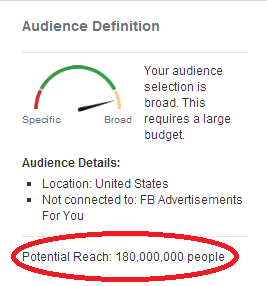
Location – If you have a local business, or a chain of stores with locations in different places, then this can really help you hone in on your exact target population. Facebook enables you to target not just by country or state, but also by city or zip code, so you can really reach the specific people you want to. Even if you don’t have a local business, you should still target specific regions in order to fit to the appropriate demographic. A company selling swimwear would want to target places like Florida or California, as opposed to places like Alaska or Siberia.
Interests – Go back to your spread sheet and look at the interests you included for your ideal client. Start by putting in these interests. Generally these will be broad interests. Next you should think about how to expand on these interests. Which brands would people who like these specific things also be interested in? What other interests are related to the ones that you already have? By adding in these different interests you are making your potential audience more and more specific – meaning you’re getting closer and closer to your ideal client.
“More Demographics” – Is a drop down menu that gives you more choices for how you would like to narrow down your targeting.
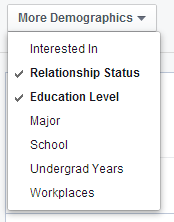
Connections – Advanced connection targeting can be the most helpful tool. This targeting setting enables you to target only people connected to you. This way you can promote a deal, an event, or anything else really, specifically to your fans.
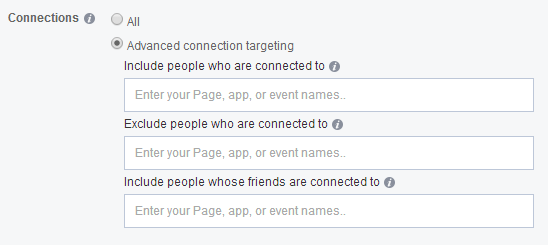
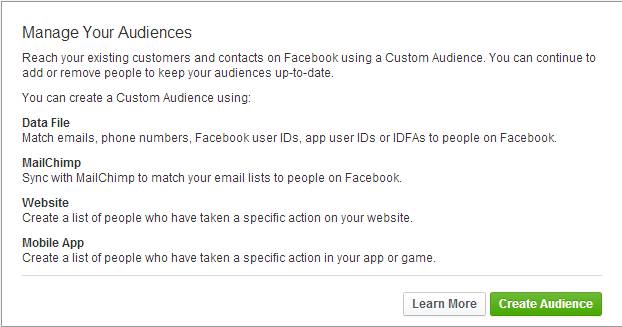
Targeting in Practice
Returning to the example of the garden furniture store, this is how I could set my targeting in order to narrow down the potential audience to between 5k-10k people.
I started by setting all of the parameters that I came up with while brainstorming, and when that was not specific enough, I started narrowing it down further. This was my thought process:
- Male, so that I can target the composition of my ad specifically towards men.
- Interested in “Lowe’s Home Improvement,” because that is the kind of place a person with these interests would probably shop.
- College grad, because usually someone who graduated college will have a higher paying job, meaning more money for a house and for garden furniture.
- Parents of younger children, because while their children play outside, the parents will probably want to sit outside with them.
- In a relationship, because single people are more likely to live in an apartment than a house.
As you add more targeting information, continue adding it to your spread sheet so that you can keep track of what you have done.
4. Budgeting
When setting the budget for your Facebook ad you have to figure out what type of budget you want to use – daily vs. lifetime, and you have to figure out what type of ad you want to bid for – CPC, CPM, oCPM, or CPA.
Setting a Budget
The very first thing you should do is to think about how much money you want to spend each month on Facebook advertising. Once you do that, you will be able to plan how you would like to split up your budget across your different campaigns. Let’s say you have a budget of $100 per month. Then you have about $3.33 to spend on ads per day.
Alternatively, you can give your ad a lifetime budget of $21.31 for seven days. Either way, Facebook will not charge you more than you set as your maximum amount, so it’s up to you to make sure that you stay within your planned budget.
Bid Type
There are a few different ways to bid on your ads, and each way distributes your ad in a different manner. Below you can see the different bidding types as outlined by Facebook.

By keeping track of the results of your advertisements, you will learn over time which type of ad works the best for you.
5. Test Your Ads
Never make just one version of an ad. No matter how many tips you follow when creating an ad, you still never know if it will be successful or not. Because of that, you always need to test out at least two or three versions of an ad using different images and CTA’s in order to see which is the most successful. Once you see which ads are converting the most for you, then you can take down the other ads and throw your money behind the successful ones.
6. Monitor and Keep Track
Last, but definitely not least, monitor your Facebook ads while they’re running and record the results once they expire. Track them while they are running in order to see which are successful and which aren’t, or which are becoming too expensive. If an ad isn’t doing well then take it down. If it is becoming too expensive, and you’re not seeing good results, take it down. You don’t want to lose money, or run bad ads just because you weren’t paying attention.
Keep track of the end results of your ads to learn for the future. Add into your Excel sheet a space for the success of the ad. By adding that in you will have created a full diagnostic report of the ads that you run. Your spreadsheet can include:
- The purpose of the ad
- The exact target audience
- The CTA used
- The type of image used
- The bid type and budget
- The results of the ad
Obviously there are many different factors that go into the composition of a Facebook ad, but by keeping track of what you have done, as you make more and more ads, you will be able to track which components your successful ads had in common and which your failed ads had in common. Through experience and studying your results, you will continue to make better and better ads.
It All Ads Up
There’s a lot that goes into making a great Facebook ad, but by breaking it down into distinct steps it’s really not so bad.
- Construct your “Ideal Customer”
- Compose an ad that appeals specifically to this target audience using eye catching CTA’s and images
- Use Facebook’s targeting options to target the most specific group that you can
- Choose the best bidding option and stick to your budget.
- Test your ads.
- Keep track of everything!
Follow these steps, and continue keeping track of where you succeeded and where you failed, and your Facebook ads will only continue getting better.

Zack is a social media enthusiast who loves all things digital. He is the inbound marketing manager at StoreYa where he spends his days searching for the newest social marketing scoop. If you’d like to chat with him, feel free to connect with him on any social platform.
Recommended articles
 Facebook Ads for eCommerce: 16 Strategies, Examples & Tips
Facebook Ads for eCommerce: 16 Strategies, Examples & Tips
 How to Build a Winning eCommerce Ads Strategy
How to Build a Winning eCommerce Ads Strategy
 Google Ads for eCommerce: Everything You Need to Know
Google Ads for eCommerce: Everything You Need to Know
 10X Your Traffic with PPC Management Software
10X Your Traffic with PPC Management Software
Comments
Powered by Facebook Comments
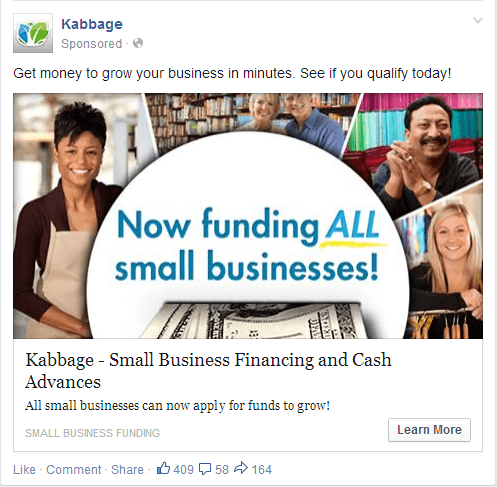
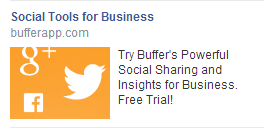
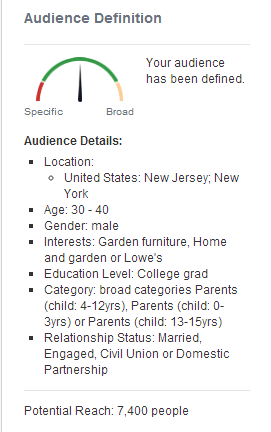



[…] you design compelling ads, use eye-catching imagery, and compose strong call to actions then you should be able to catch many […]